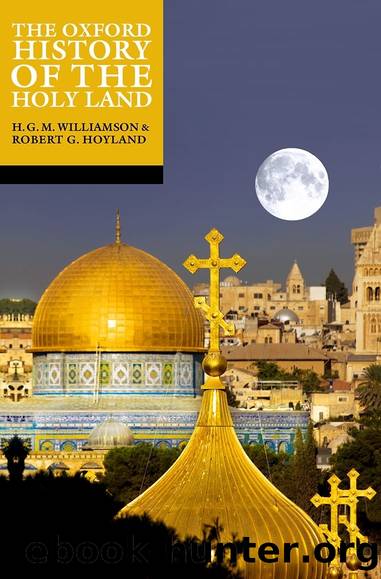The Oxford History of the Holy Land by unknow

Author:unknow
Language: eng
Format: epub
Publisher: Oxford University Press, Incorporated
Published: 2023-02-07T00:00:00+00:00
Aspects of Frankish Government and Society
The kingdom of Jerusalem imported a European model of social hierarchy, but it did not correspond exactly to that of feudal Europe. Apart from the clergy, there were only two classes below the monarch: the nobility who provided the main military forces of the kingdom, and the merchant class, known as the burgesses. Apart from the four ruling families of the Frankish states, almost all the nobles who came there were parvenus. But such newcomers could succeed, especially by shrewd marriage alliances. The notorious Reynald of Chatillon, whose escapades down the Red Sea shocked the Muslim world and whom Saladin had personally vowed to kill, made two advantageous marriages, and Guy de Lusignan became King of Jerusalem by marrying Queen Sibylla. The burgesses comprised all those who were not nobles. In the Frankish kingdom of Jerusalem they made up the majority of the population, but in the other three Frankish states they were outnumbered by Eastern Christians. The burgesses were in charge of local small-scale trade, but not of the international commerce which was handled by the Italians.
Muslims and Jews were not debarred from entering the Holy City for the whole time of Frankish rule there. In due course they were allowed in to conduct business and to pray, as the evidence of the famous twelfth-century Arab writer of memoirs, Usama b. Munqidh, shows. No doubt, they were also needed by the conquerors to undertake crucial jobs which the Crusaders could not or would not do, serving as vendors, bath-attendants, dyers, and in other practical capacities.
There is evidence that the Franks carried on certain Muslim administrative practices that they found in place on their arrival. For example, they adopted the concept of the muhtasib (mehtesseb), an official whose duty it was to visit the markets daily and to ensure that proper weights and measures were used in the markets. Moreover, it would seem that, certainly in some Frankish areas at least, Muslims were required to pay a poll tax, to the Christian Frankish government, just like the poll tax (jizya) Muslim governments had imposed on their Christian and Jewish subjects in the pre-Crusading period. When writing about Nablus, Ibn Jubayr mentions that its Muslim subjects âlived as subjects of the Franks who annually collected a tax from them and did not change any law or cult of theirsâ.
The population of the rural areas remained the indigenous inhabitants, Muslims, Eastern Christians, and Jews. They were responsible for the agriculture on which the Frankish cities depended. However, unlike in Europe, there were no close links between the lords who lived in the towns and the peasants who worked their lands. Ironically, too, the western European Christians, who had come out East to rescue their Eastern co-religionists, did not provide the latter with a better life. But it is difficult to discover how Muslims lived under Frankish rule. Neither Frankish nor Muslim chroniclers show any interest in the legal or other internal administration of the subject peoples. Isolated references cannot be taken to indicate widespread practices.
Download
This site does not store any files on its server. We only index and link to content provided by other sites. Please contact the content providers to delete copyright contents if any and email us, we'll remove relevant links or contents immediately.
| Bahrain | Egypt |
| Iran | Iraq |
| Israel & Palestine | Jordan |
| Kuwait | Lebanon |
| Oman | Qatar |
| Saudi Arabia | Syria |
| Turkey | United Arab Emirates |
| Yemen |
Empire of the Sikhs by Patwant Singh(22974)
The Wind in My Hair by Masih Alinejad(5034)
Rise and Kill First by Ronen Bergman(4703)
The Templars by Dan Jones(4628)
The Rape of Nanking by Iris Chang(4137)
12 Strong by Doug Stanton(3508)
Blood and Sand by Alex Von Tunzelmann(3138)
Babylon's Ark by Lawrence Anthony(2620)
The History of Jihad: From Muhammad to ISIS by Spencer Robert(2570)
No Room for Small Dreams by Shimon Peres(2319)
The Turkish Psychedelic Explosion by Daniel Spicer(2313)
Inside the Middle East by Avi Melamed(2305)
Gideon's Spies: The Secret History of the Mossad by Gordon Thomas(2304)
Arabs by Eugene Rogan(2262)
The First Muslim The Story of Muhammad by Lesley Hazleton(2218)
Come, Tell Me How You Live by Mallowan Agatha Christie(2212)
Bus on Jaffa Road by Mike Kelly(2101)
Kabul 1841-42: Battle Story by Edmund Yorke(1985)
1453 by Roger Crowley(1961)
